Automobile with two wheels: on 29 August 1885 Gottlieb Daimler filed a patent for his “riding car”
In 1886 Carl Benz invents the three-wheeled Patent Motor Car, Gottlieb Daimler the four-wheeled Motor Carriage
 The birth of a car as we know it today took place in 1886. Independently of one another, the two founding fathers of the company now known as Daimler AG, Carl Benz and Gottlieb Daimler, invented a vehicle with internal combustion engine – Benz his three-wheeled Patent Motor Car, Daimler the four-wheeled Motor Carriage. However, the previous year, in late summer 1885, Gottlieb Daimler’s two-wheeled “riding car”, also equipped with an internal combustion engine, travelled under its own power. In the original sense of the term, therefore, it could also be considered an automobile, since the word derived from the Greek auto (“self”) and the Latin mobilis (“mobile”). Only later did the word automobile establish itself as a generic term for multi-track vehicles.
The birth of a car as we know it today took place in 1886. Independently of one another, the two founding fathers of the company now known as Daimler AG, Carl Benz and Gottlieb Daimler, invented a vehicle with internal combustion engine – Benz his three-wheeled Patent Motor Car, Daimler the four-wheeled Motor Carriage. However, the previous year, in late summer 1885, Gottlieb Daimler’s two-wheeled “riding car”, also equipped with an internal combustion engine, travelled under its own power. In the original sense of the term, therefore, it could also be considered an automobile, since the word derived from the Greek auto (“self”) and the Latin mobilis (“mobile”). Only later did the word automobile establish itself as a generic term for multi-track vehicles.
In the sum of its features, the riding car was the most important precursor to individual mobility, thereafter rendered possible by the advent of the automobile. It was proof on wheels that the internal combustion engine was capable of powering a road vehicle –and that a human being could fully control it. Indeed, in the case of the riding car, by sitting astride the engine he was seen to take complete control of the machine with the objective of locomotion. By means of just a few levers he was able to set the vehicle in motion. The riding car therefore gave an important and lasting signal of what could be achieved.
The compactness of the riding car also sent out another important signal, for it used the smallest and most powerful combustion engine available capable of being fitted to a two wheeled vehicle – it would have been impossible at the time to build a smaller vehicle than the riding car equipped with combustion engine.
The most important prerequisite for the riding car, simultaneously the world’s first motorcycle, was Gottlieb Daimler’s four-stroke, single-cylinder engine, which he registered for patent on 3 April 1885. This was a milestone in the history of technology, since the unit was small and powerful compared with other combustion engines of the day for stationary operation. Daimler’s priority, on the other hand, was the engine’s mobile application. He applied for a patent for his riding car with “gas or petroleum engine,” as it was described in the patent specification, on 29 August 1885 (German Patent No. DRP 36423 was awarded on 11 August 1886).
The riding car was proof on wheels that the internal combustion engine was capable of driving a human-controlled road vehicle. Moreover, it provided an impressive demonstration of the size and power of the Daimler engine. For the riding car was a highly compact vehicle, and therefore sent out an important message about the large and unwieldy stationary internal combustion engines of the day.
Two inventors – one idea
The founding fathers of Daimler AG, Gottlieb Daimler in Cannstatt and Carl Benz in Mannheim, were working on an identical problem at the end of the 19th century – the invention of a vehicle that would give man the ability to travel without reliance on being pulled by a horse. They worked away independently, without knowing what the other was doing – and one can only assume the two had never met. Their places of work were separated by a distance of 120 kilometres – at least a whole day’s journey in the late 19th century.
They both reached their objective almost simultaneously, though with different solutions: Benz built his three-wheeled Patent Motor Car, for which he was awarded the German Patent No. DRP 37435 on 29 January 1886. And shortly afterwards Daimler presented the first four-wheeled motor vehicle, a carriage chassis in which he had integrated the combustion engine that had proved so effective in the riding car.
Daimler pursued the vision of motorising a whole range of vehicles, on land, on water and in the air. He demonstrated the engine’s potential for universal application, for example, by fitting it in a boat in 1887, and in an airship designed by Friedrich Hermann Wölfert in 1888. Neither was Benz idle: by 1887 he had also completed a first motorboat, and aero engines followed later. But by this time, both inventors were already involved in the series production of automobiles.
Background to the Benz Patent Motor Car
German Patent No. 37435 is regarded as the birth certificate of the automobile
As a young designer Carl Benz went through years of mixed fortune. He established his first company with the talented mechanical engineer August Ritter in Mannheim in 1871. The workshop had the typical Mannheim address T 6, 11. But Ritter proved to be a less than reliable partner, and only with financial assistance from his fiancée, Bertha Ringer, did Benz manage to extricate himself from the problem: she used her dowry to buy Ritter out. In 1872 Bertha Ringer and Carl Benz married. His wife was to play a decisive role in the future success of the fledgling company. Not only did she promote his work, she also undertook the world’s first long-distance journey by automobile.
To begin with Carl Benz’s business did not go well. His “Iron Foundry and Mechanical Workshop”, which he later also referred to as a “Factory for Steel Processing Machinery”, was subject to the confiscation of tools. During this time Benz worked intensively on the two-stroke engine in order to set up a new livelihood. After a two-year period of development, he finally got his first stationary engine running to his satisfaction on New Year’s Eve 1879. This was designed in line with the two-stroke principle, since a German Patent had been awarded to the Gasmotorenfabrik Deutz in 1877 for Nikolaus August Otto’s work on the four-stroke engine. Benz was awarded several basic patents as a result of perfecting his two-stroke engine, which he developed to production standard. These included his engine speed regulator and new battery ignition system – a technical advance over Daimler.
Benz’s first engine was still too heavy to be mounted in a road-going vehicle, which was the designer’s ultimate objective. Nevertheless, the engine helped establish the necessary prerequisites. For soon enough his stationary two-stroke engines were considered to be fully developed and found ready buyers, bringing in the revenues necessary for further technological development. In 1880 Benz was granted a patent for a gravity-feed oil device to improve lubrication. In 1883 he developed a gas throttle control, which remains the basis behind modern engine output control. From spring 1884 Benz began equipping his engines with an electric high-voltage ignition.
After a few intermediate steps – as well as setbacks – Benz set up the company
Benz & Co. Rheinische Gasmotoren-Fabrik with two technologically minded businessmen, Max Rose and Friedrich Wilhelm Esslinger on 1 October 1883. Now financially secure, he was at last able to devote himself to developing his car engine and set about designing a complete vehicle equipped with his four-stroke petrol engine. In the autumn of 1885 Benz undertook preliminary test drives. On 29 January 1886 he was awarded German Patent No. 37435 for his three-wheeled Patent Motor Car. This document has become widely recognised as the birth certificate of the automobile.
The Patent Motor Car was equipped with a horizontal single-cylinder four-stroke engine, which developed an output of 0.55 kW at 400 rpm from a displacement of
954 cubic centimetres. The vehicle’s top speed was 16 km/h. The Patent Motor Car followed a holistic approach, in as far as engine, chassis and drive were precisely tuned to one another and formed a single entity. In this, Benz was far ahead of his competitors, who were still incorporating their engines into converted carriage-type vehicles.
1888: Gottlieb Daimler files patent application for first gasoline-powered fire-fighting pump
- Clear superiority over steam-powered pumps
- Performance continually raised
- Positive response from a number of countries
The gasoline-powered fire-fighting pump, invented by Gottlieb Daimler and the subject of a patent application filed with the Imperial Patent Office in Berlin on July 29, 1888, attracted worldwide attention in next to no time.
Gasoline engine by Daimler, piston pump by Kurtz
Gasoline and fire – two elements which firefighters were unable to reconcile for a long time. Back in 1910, the fire brigade commissioners still disagreed as to whether the gasoline engine was suitable for driving fire-fighting vehicles or not – despite the fact that they had been using gasoline engines for some 20 years at the time, not to drive vehicles, though, but to drive pumps.
It is generally assumed that it was bell-founder and fire-fighting pump manufacturer Heinrich Kurtz who gave Gottlieb Daimler the idea of placing his gasoline engine at the service of fire brigades. Be that as it may, it was Kurtz who had produced the castings for Daimler’s first internal-combustion engine two years earlier, and who now supplied the fire-fighting appliance with piston pump for which Daimler made an engine available – initially a one hp single-cylinder unit.
Kurtz was perfectly familiar with the fire brigades’ problems, knowing that the steam-powered pumps customary at the time required about a quarter of an hour’s heating before they were operational. In order not to have to idly watch the fire wreaking havoc during this time, the fire brigades carried along gas-powered extinguishers, spraying water into the flames under carbonic-acid pressure. A gasoline engine, by contrast, was capable of being put into operation immediately and with much greater effect.
In his turn, Gottlieb Daimler was gladly prepared to open up new fields of application for his internal-combustion engine. Only a small additional transmission was required to adapt the high-speed single-cylinder engine to Kurtz’s piston pump which, in its turn, reached its highest efficiency at 180/min. Gottlieb Daimler was granted a patent – No. 46779, class 59 – for his engine-driven fire-fighting pump on April 15, 1889.
Output boosted to up to ten hp
No invention, however well devised, cannot be improved upon. Daimler’s engine-driven fire-fighting pump may have been capable of holding its own in competition with any contemporary fire-fighting appliance, but there was no good reason for being content with an engine output of just one hp. As early as the 13th German Fire Brigades’ Convention in Hanover the same year, Daimler displayed a more powerful engine-driven fire-fighting pump, now featuring a twin-cylinder engine with as much as four hp (2.9 kW).
In the following years, Daimler boosted the output of his engines up to ten hp (7.4 kW). And as early as 1892, his six hp (4.4 kW) pump proved itself in a large fire in Cannstatt where it did five hours of reliable service in fighting the fire in a factory producing bed feathers. Its technical data caused quite a stir: it sucked water from a depth of five meters and pumped it through a 150 meter long pressure hose 20 meters high into the roof. This appealed to the professional fire brigade of Erfurt, which acquired the fire-fighting pump at a price of 5610 marks in 1896. In Erfurt, the pump continued doing reliable service for another 25 years.
The fact that the first engine-driven pumps were limited in their capacity was attributable less to the engines than to the pumps. It was not before 1909 that high-speed centrifugal pumps were developed, making better use of the engine output and pumping the water jet twice as high into the air.
Worldwide attention
Daimler was perfectly convinced of the trend-setting nature of his invention. As early as 1892 he left no stone unturned in his endeavors to spread the news of his engine-driven fire-fighting pump throughout the world. In that year, he displayed a unit with six hp (4.4 kW) twin-cylinder engine first in St. Petersburg, then in Leipzig, Munich, Florence and Milan. In 1893, Daimler’s engine-driven fire-fighting pump was exhibited at the World Exposition in Chicago.
A Daimler fire-fighting pump was also shown at the first British “Horseless Carriage Exhibition” in Tunbridge Wells in 1895. Gottlieb Daimler had sent it to Evelyn Ellis who, together with Frederick R. Simms, managing director of Daimler Motor Syndicate Ltd., proudly presented it to a stunned public.

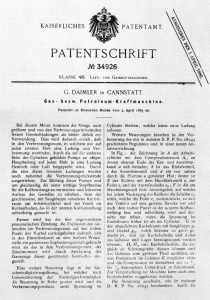
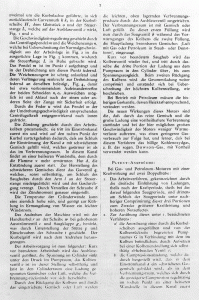
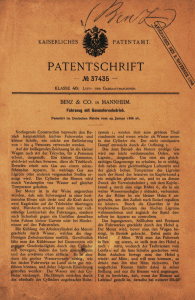
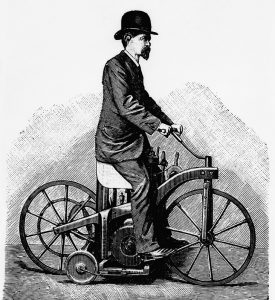
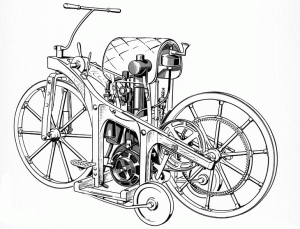

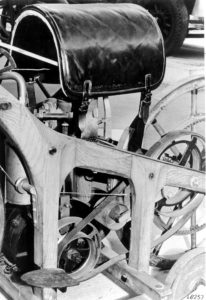
You must be logged in to post a comment.